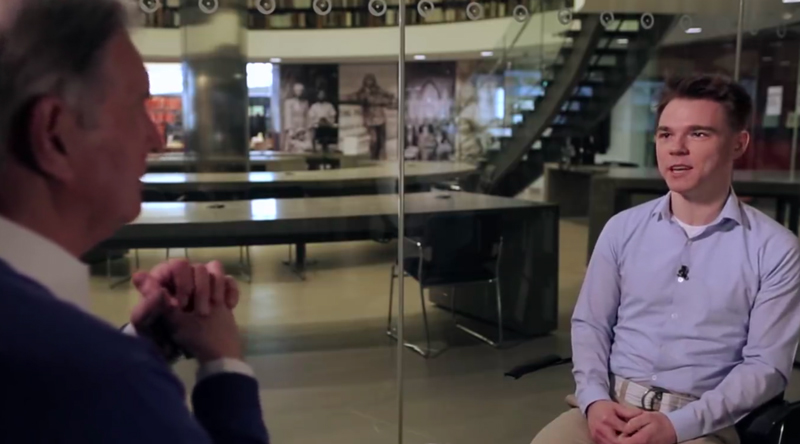
Tom Hooper interviewed by the Fifth Estate (CBC image)
In a video by CBC’s The Fifth Estate, York University historian Tom Hooper talks about a string of murders in 1970s Toronto and their connection with the current case against alleged serial killer Bruce McArthur.
In the first half of the video, the narrator focuses on the murders of gay men in the ’70s and how the crimes seem similar to the more recent murders in the city’s gay village. While researching gay Toronto in the ’70s for his PhD, Hooper came across a number of murders of gay men, many of which are still unsolved to this day.
“I’m really dumbfounded actually, I think the past is speaking directly to us. Why has nothing changed?” Hooper says.
He continues to explain the difficult relationship between the gay community and the police back in the ’70s.
“When a gay person is the victim of a crime they expect the police to pay attention to them and take them seriously. That was not happening in the 1970s,” says Hooper. “But on the flip side, when it came to lesser crimes, for example jaywalking, the police were hypertensive to the gay community with that.”
Hooper references the bathhouse raids of 1981 where 160 policemen descended on four gay bathhouses in downtown Toronto.
As Hooper describes it, “They entered very quickly, they entered very loudly, they yelled ‘this is a raid’ and they arrested all the keepers or the people who were employed at the bathhouse. Then they methodologically went room by room smashing through doors and rounding people up into the shower rooms and locker rooms.”
He continues by explaining why the gay community was so scared and how that influenced the 1970 murders.
“They (the gay community) were vulnerable, they couldn’t talk to their friends about where they were going that night, they couldn’t tell their family and then when they went missing or didn’t show up for work, people didn’t know where to look,.” Hooper says.
In the second half of the video, the narrator explores more about McArthur and the possibility that he could’ve been the killer of the 1970s murders. Hooper responds to this at the end of the video by expressing his dread.
“He (McArthur) could have been part of what happened then. I don’t want to think about that because it makes me sick,” Hooper says. “It makes me wonder what about the ’80s, ’90s and 2000s and how many people did he come across through that time period.”
